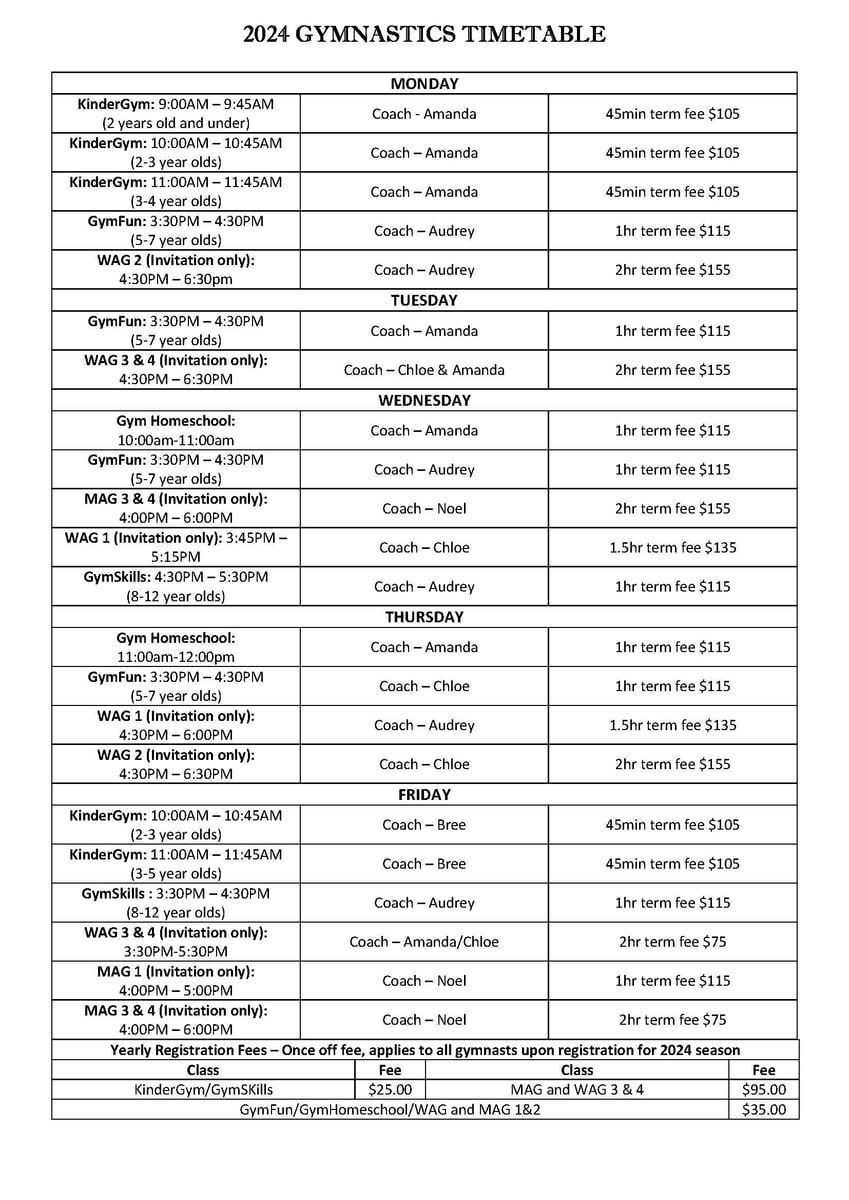
The Thrilling Schedule of Olympic Gymnastics: A Deep Dive into the Competition
The Olympic Games, a quadrennial spectacle of athletic prowess, showcase the pinnacle of human achievement across diverse disciplines. Among these, artistic gymnastics stands out, captivating audiences worldwide with its breathtaking displays of strength, flexibility, and grace. Understanding the Olympic gymnastics schedule is key to fully appreciating the intensity and complexity of this demanding sport. This article provides a detailed breakdown of the typical schedule, highlighting the key events, qualifying rounds, and the dramatic finale that determines the Olympic champions.
The Structure of Olympic Gymnastics Competition:
The Olympic gymnastics competition is meticulously structured, encompassing both men’s and women’s artistic gymnastics. Each gender competes in individual all-around and apparatus finals, creating a dynamic and multifaceted competition. The schedule is typically spread over several days, allowing for ample time for qualification rounds, rest periods for athletes, and the build-up of anticipation towards the final events.
Qualifying Rounds: The Foundation of Success:
The journey to Olympic glory begins with the qualifying rounds. These are crucial initial stages that determine which gymnasts advance to the subsequent finals. The qualifying process is intense and demanding, requiring athletes to perform flawlessly across multiple apparatus. The scores accumulated during these qualifying rounds are vital, impacting the seeding and placement in the later stages of the competition.
-
Men’s Qualification: Men compete on six apparatus: floor exercise, pommel horse, rings, vault, parallel bars, and high bar. Their performance on each apparatus is individually scored, and the combined score determines their overall ranking. Only the top gymnasts, usually based on a set number or a percentage of the total field, progress to the individual all-around final. Furthermore, the top eight gymnasts on each apparatus advance to the apparatus finals, providing opportunities for specialized athletes to showcase their expertise.
-
Women’s Qualification: Women compete on four apparatus: vault, uneven bars, balance beam, and floor exercise. Similar to the men’s competition, their performance on each apparatus contributes to their all-around score. The highest-scoring gymnasts advance to the individual all-around final. Subsequently, the top eight gymnasts on each apparatus proceed to the respective apparatus finals, offering a further chance to earn medals.
The All-Around Competition: A Test of Versatility:
The individual all-around competition is a true test of a gymnast’s overall abilities. It requires a well-rounded skillset, showcasing proficiency across all apparatus. Gymnasts must demonstrate strength, flexibility, balance, and precision throughout the entire routine. The pressure is immense, and even a minor error can significantly impact the final score. This event is typically held several days after the qualifying rounds, allowing athletes some time to recover and strategize. The winner of the all-around is considered the most versatile and consistently strong gymnast of the competition.
Apparatus Finals: Showcasing Specialization:
Following the all-around competition, the apparatus finals take center stage. These events highlight the specialized skills and mastery of individual gymnasts on specific apparatus. The pressure intensifies as only the top eight gymnasts from the qualifying rounds compete for the coveted medals. Each routine is a display of pinpoint accuracy, powerful execution, and exceptional artistry. These finals provide exciting moments of intense competition and are often characterized by high scores and nail-biting finishes. The apparatus finals are usually spread out across a couple of days, adding to the excitement and allowing spectators to savor the exceptional skill on display.
Team Competition: Synchronicity and Support:
In addition to the individual events, the Olympic gymnastics schedule includes a team competition. This event underscores the importance of teamwork, camaraderie, and synchronization. Each team comprises a set number of gymnasts, and their combined scores determine the team ranking. The team competition requires exceptional coordination and unwavering support amongst teammates. The pressure to perform consistently as a unit is immense, and the winning team embodies the true spirit of collaboration and collective achievement.
The Role of Difficulty and Execution:
The scoring system in Olympic gymnastics is complex, encompassing both the difficulty and the execution of the routines. Gymnasts are awarded points based on the intricacy and risk level of their skills, combined with the precision and cleanliness of their performance. A high-difficulty routine with flawless execution guarantees a high score. However, a challenging routine with errors will result in a significantly lower score, underlining the importance of both skill and consistency. This scoring system adds another layer of excitement to the competition, as the judges’ evaluations play a crucial role in determining the outcome.
The Anticipation and Excitement:
The Olympic gymnastics schedule is carefully crafted to build anticipation and excitement. The qualifying rounds set the stage, introducing the athletes and creating early rivalries. The all-around competition reveals the most versatile gymnasts, while the apparatus finals offer moments of intense specialization. The team competition adds a dimension of collaborative spirit and national pride. Each stage of the competition contributes to the overall narrative, culminating in the crowning of Olympic champions.
Beyond the Medals:
The Olympic gymnastics schedule is more than just a sequence of events; it’s a narrative of dedication, sacrifice, and years of rigorous training. The athletes who compete at this level represent the culmination of countless hours of hard work, perseverance, and a relentless pursuit of excellence. Their performances are not only a testament to their physical capabilities but also a reflection of their mental fortitude and unwavering determination.
Conclusion:
The Olympic gymnastics schedule is a captivating journey through the world of elite gymnastics. It’s a meticulously planned series of events that showcase the remarkable athleticism, skill, and artistry of the world’s best gymnasts. Understanding this schedule provides a deeper appreciation for the complexity and intensity of the competition, allowing spectators to fully engage with the drama, excitement, and ultimately, the triumph of Olympic glory. Whether it’s the nail-biting finishes of the apparatus finals or the collaborative spirit of the team competition, the Olympic gymnastics schedule offers a thrilling spectacle that captivates audiences worldwide and leaves a lasting impression on all who witness it.



